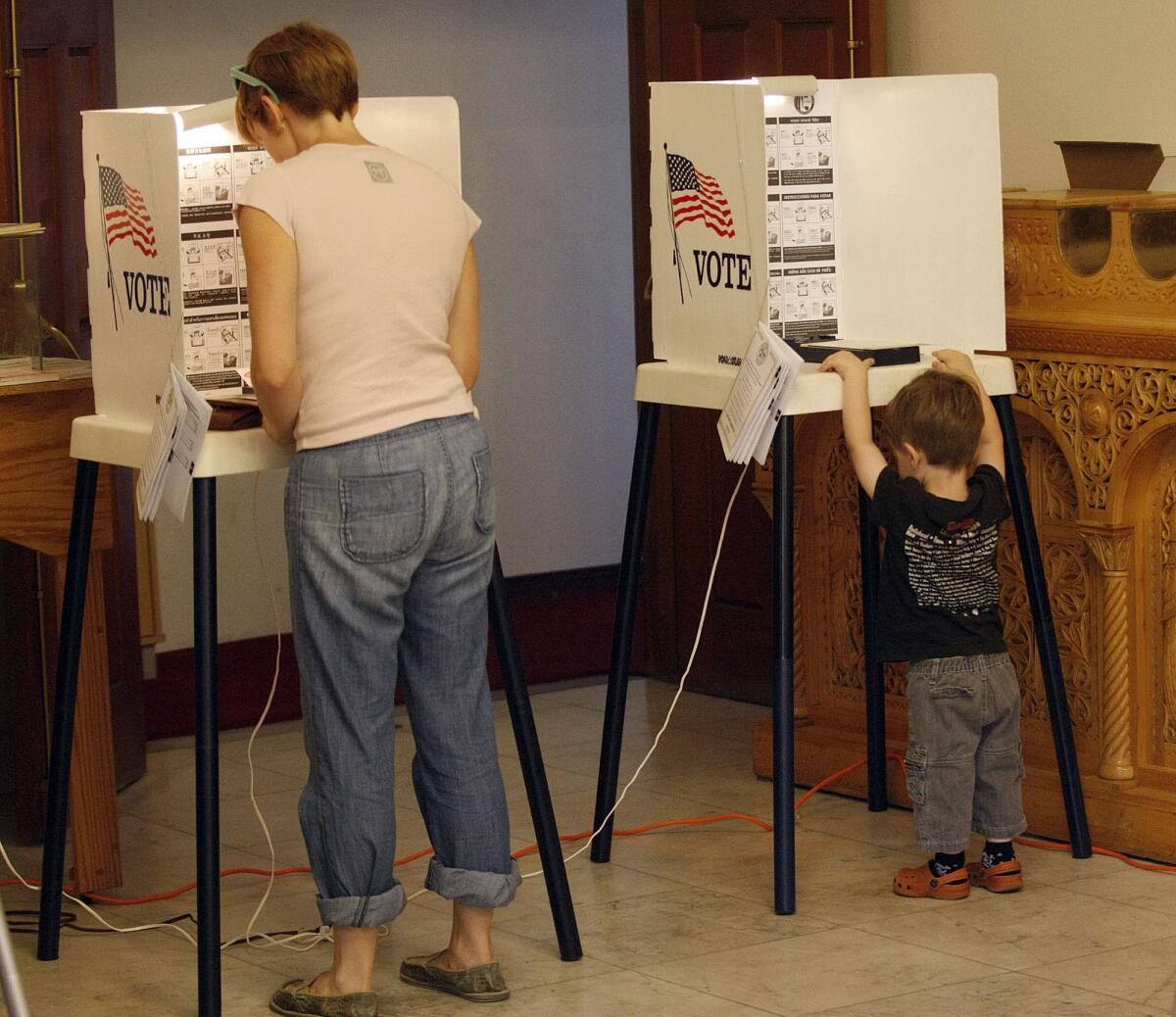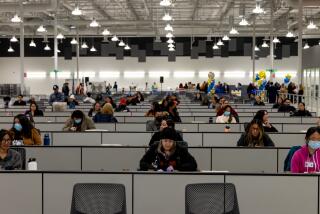Some June write-in candidates made it to the November ballot

The state’s relatively new top-two primary election system has helped more than a dozen June write-in candidates earn places on the Nov. 4 ballot -- and without paying filing fees.
Under the top-two system, all the candidates for a given California office appear on the same ballot and only the first- and second-place finishers are allowed to advance to the fall general election, regardless of any party affiliation.
In the two state election cycles in which the new system has been used, it has produced several fall races pitting members of the same party against each other and, in a handful of contests opened the door for an unaffiliated candidate to compete head-to-head with a member of a major party.
This fall, write-in hopefuls will appear on the ballot in a race for one seat on the state Board of Equalization and in two congressional, three state Senate and 10 Assembly district contests.
How did that happen?
After the filing period passed for the June 3 primary, candidates, or in some cases their party leaders, scoured the lists for attractive contests -- in many cases, those with just one candidate.
In one Assembly race, for example, in which incumbent Chris Holden (D-Pasadena) appeared to be running unopposed, four write-ins -- three Republicans and one Libertarian-- competed for the second spot on the fall ballot. Republican Nathaniel Tsai collected 394 votes in the primary, enough to allow him to face Holden, whose tally was 35,296, this fall.
For the state Board of Equalization seat to which Democrat Jerome E. Horton of Inglewood is seeking reelection, Republican G. Rick Marshall’s 1,849 votes put him ahead of the three other write-ins, giving him a chance to take on Horton , who got 402,244 votes.
But his and other write-in candidates’ primary victories are likely to be short-lived, as most face overwhelming odds in the fall. They’ll be going up against better known, better financed incumbents.
They include Rep. Janice Hahn (D-San Pedro) in a district in which Peace and Freedom Party member and write-in candidate Adam Shbeita got five votes to Hahn’s 25,641. Shbeita was her only challenger in June.
Democrat Raul Garcia fared a bit better in his write-in primary challenge to Rep. Kevin McCarthy (R-Bakersfield), a rising leader among House Republicans. Garcia’s 313 votes put him ahead of the three other write-in candidates. McCarthy’s total? 58,334.
The new system also prohibits any write-ins in the general election. As with other candidates, much rides on the primary -- if they fail to finish first or second, they’re done.
Follow @jeanmerl for the latest in Southern California politics news.
More to Read
Start your day right
Sign up for Essential California for news, features and recommendations from the L.A. Times and beyond in your inbox six days a week.
You may occasionally receive promotional content from the Los Angeles Times.







